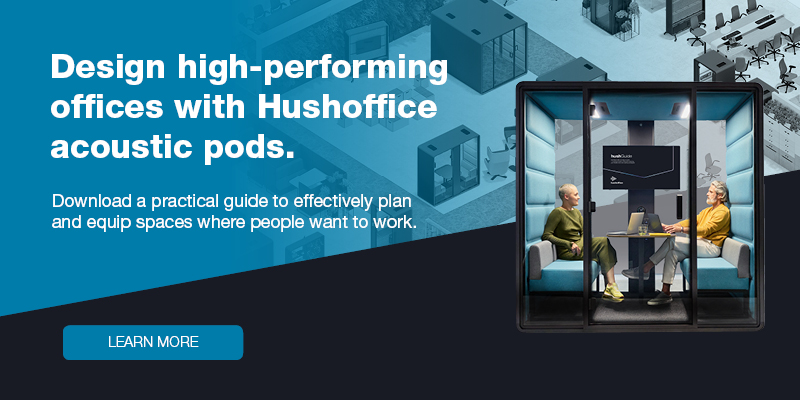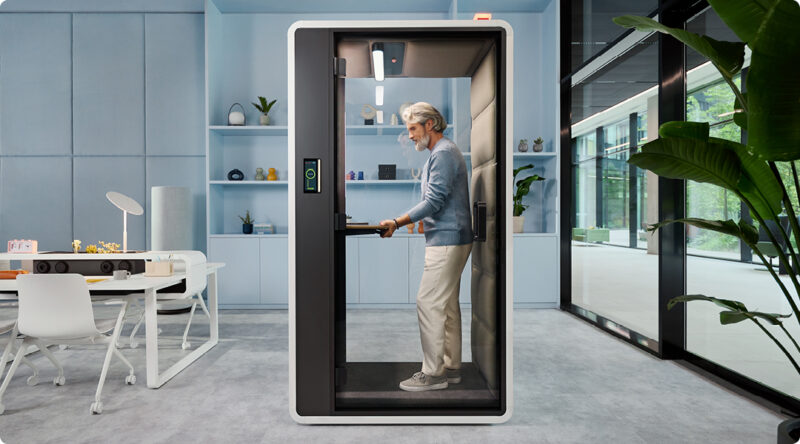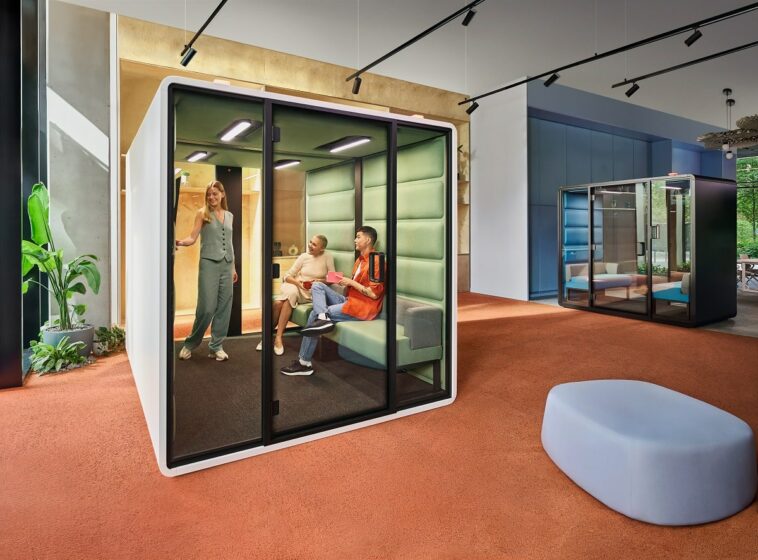Become more resilient by prioritizing recovery
- Posted on: 1 February 2023
- By: Hushoffice Team
Do you ever feel run down? Dispirited? Checked-out? You’re not alone. 76% of employees experience burnout. It’s now recognized as an international crisis. But take heart — you can actually become more resilient to stress by doing less, not more.
The more imbalanced we become from working too hard, the more value there is in unplugging for concerted recovery
– says Mateusz Barczyk, Senior Brand Manager, Hushoffice.
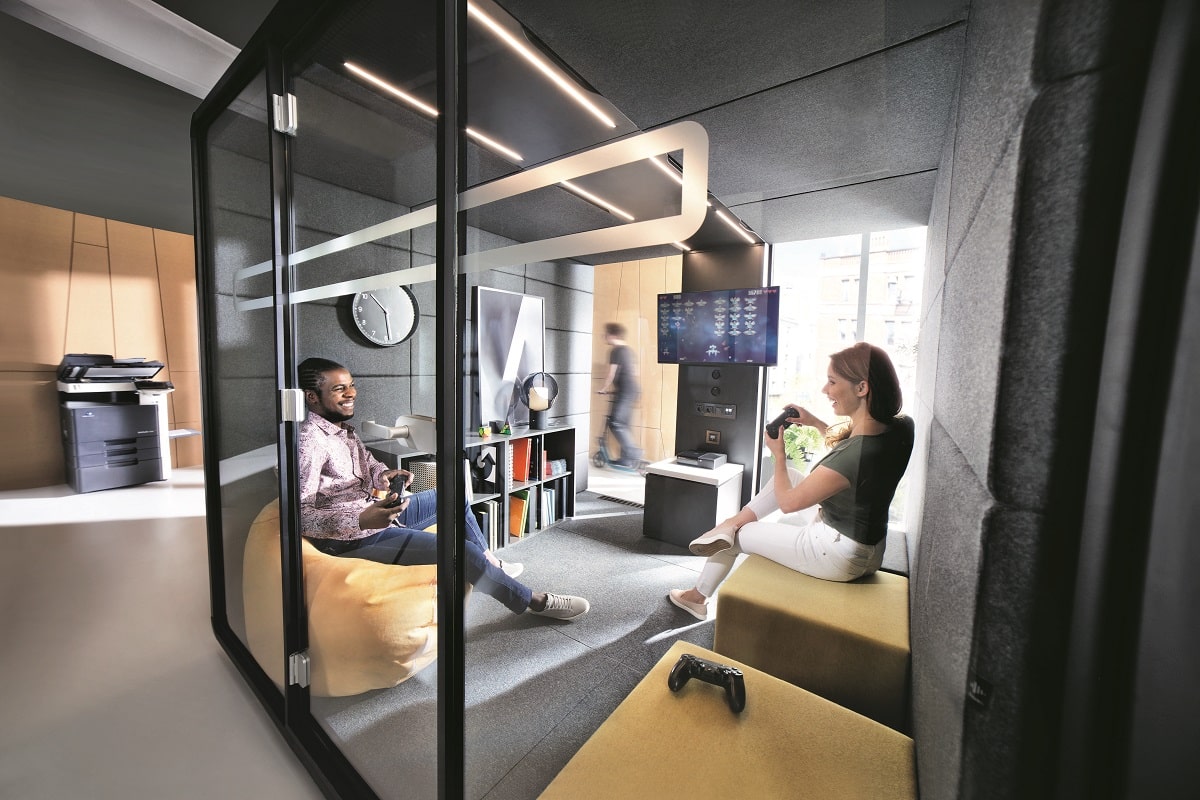
Employee resilience – tl;dr
Resilience is about how you recharge, not how you endure. As a matter of fact, overworking downright doesn’t work; countless studies have shown that its resulting stress leads to a garden variety of health problems, from impaired sleep to heart disease.
To turn the burnout ship around, take your hands off the helm periodically throughout the work day. The formula is simple: try hard, rest, then try hard again. Rest is the missing variable for most.
Take these five steps to build resilience in an easy-breezy way: do a self-assessment, set up your technology to help (rather than hurt), take regular breaks, start a work shutdown ritual, and prioritize sleep.
Is employee resilience really about soldiering on? Perhaps not…
What does resilience look like to you? An athlete pushing through physical pain? A student pulling an all-nighter? A lawyer pressing on until the wee hours? Some picture of grit as dogged as it gets, right? Such a toughing-it-out-for-victory image of resilience is glamorous…
…but it’s a fantasy.
It turns out resilience is about how you recharge, not how you endure.
The scientific consensus is that what holds many of us back in our pursuit of health, happiness, and professional success is not a pattern of giving too little but of giving too much. Rest is key. Recovery periods from work do more than encourage wellness — they’re what give our work its shine.

There is actually a cost, not a benefit, of pushing through.
There is a direct correlation between inadequate recovery and increased health and safety problems at work.
Because when you focus on one task for too long, your performance declines.
Holding sustained attention wears you out, making you less effective while simultaneously killing your buzz. Perhaps you can relate. Researchers call this common phenomenon vigilance decrement or the diminishing ability to maintain focus on a task as more time spent continuously tackling it goes by.
To build more resilience to stress, you don’t actually need to do any building at all. In truth, you don’t need to do anything. Rest is the move. When rest is let work its wonder, your brain gets a break, inviting your subconscious to take the wheel and chew on the moment’s challenge while you chill out. It’s as simple as putting down devices, stepping away from the desk, and going for a mind-clearing walk whenever you hit the wall. Pods like those in our Hushoffice collection can help by isolating you from the office’s demands, should you prefer to take a beat right on the floor
– says Mateusz Barczyk, Senior Brand Manager, Hushoffice.
Overworking just doesn’t work.
Not only is working too hard all in vain — working too hard works directly against you. Numerous studies have shown that overwork and the resulting stress can lead to all kinds of health problems, including impaired sleep, depression, diabetes, weakened memory, and heart disease. No fun.
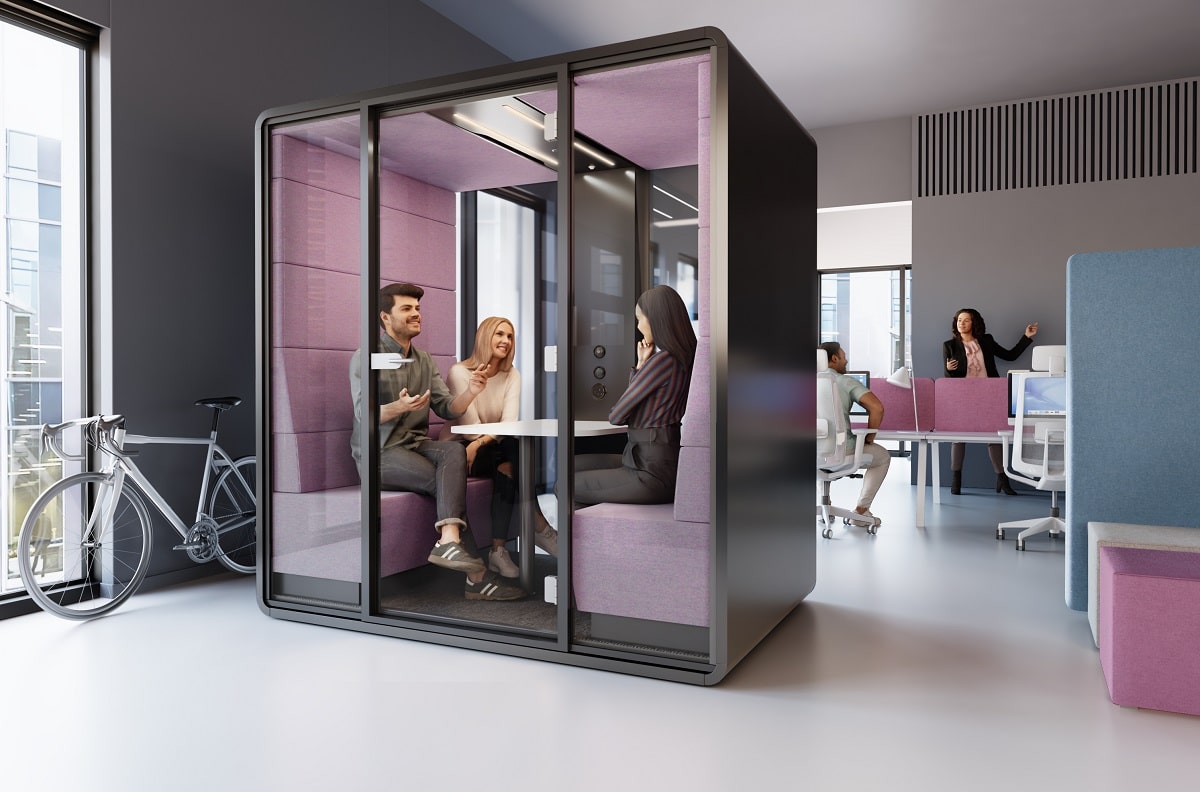
So despite what grind culture would have you believe, resilience is not toughing it out.
Working straight through lunch. Banging your head against the wall rather than regrouping. Piling a new task onto a full plate. Checking emails well after clocking out. Dutifully obsessing about a work matter over supper. Forgoing vacation. These “hustle” habits take much more than they give.
How to turn the ship around? Take your hands off the helm periodically throughout the day.
The trick to resilience is simple. Try hard. Stop. Recover. Try hard again. Stopping and recovering are the missing pieces for most.

Step 1: Do a self-assessment
Trite as it reads, awareness is the first step toward lasting, good change. See the Rank My Resilience Assessment with questions probing four main quadrants of resilience (mental, emotional, physical, and spiritual). You’ll get a rating and takeaways from resilience guru Adam Markel’s curriculum.
Step 2: Set up your technology to help, not hurt
Digital mindfulness is a pillar of well-being in today’s world. Without it, your house of health is built on sand. The end goal is to use tech mindfully, never mindlessly. Pomodoro timers, screen-time trackers, and app usage limiters can propel you toward this goal.
Step 3: Take regular breaks
Breaks between meetings, alone, can change your game.
Microsoft’s bounty of research on meeting fatigue highlights the grand utility of basic breaks.
Using EEG caps to measure brain waves associated with stress, their team showed that while back-to-back meetings degrade focus and engagement, breaks between meetings allow the brain to reset, lessening cumulative stress buildup.

What to do on your breaks? Whatever you take pleasure in.
Whatever absorbs you, letting you forget about work without effort. People who do things they wholeheartedly enjoy when they break at work have fewer health symptoms (like headaches, eye strain, and back pain). They have lower rates of burnout and higher job satisfaction, too.
Quality breaks can be anything from deskercise to doodling.
Tech-free is ideal.
- Guided meditation
- A humorous podcast
- Pleasant music
- A leisurely walk
- Jumping jacks or other bodyweight movements
- Self-massage
- A few minutes of Qi Gong, Tai Chi, Yoga, or other art
- Elevating your legs
- A snack (prepared and eaten presently)
- Sudoku, a crossword, or similar puzzle game on paper
- Drawing
- Tidying, dusting, and wiping down your workspace
- An easy read like poetry or riddles
- Sitting and letting your mind wander
- Meeting up with a work friend
- Breathwork
- Calling a loved one
- Stretch
- Doing absolutely nothing

Research shows that taking breaks to relax, socialize, or watch cat videos improves your performance. Relaxation-based ones, in particular — like just listening to birds on the patio — are markedly effective at helping you detach from work. And healthy detachment, in turn, predicts less strain, less fatigue, and greater concentration.
Unlike our devices, we must unplug to recharge. So uncouple from your work intermittently — throughout the day and at the end of it. You’ll restore energy in the now, preventing burnout in the future
– says Mateusz Barczyk, Senior Brand Manager, Hushoffice.
Step 5: Start a work shutdown ritual
Such a ritual shifts you into evening mode, functioning as a buffer between “work” and “life” that guards your well-being.
The ability to let go of work each evening serves you (and your work) well.
Employees who do soothing activities to close out each workday report better sleep than those who don’t. It follows that people with such an ability to set work down each day are happier with their lives and less strained overall than those who struggle to call it a day.

Step 4: Protect your sleep
Who do you know that’s remarkably resilient? We bet that they’re well-rested for the most part.
Sleep is the recovery period of all recovery periods.
It’s the substructure of your life — your health, your clarity, your mojo, your mood. What happens when sleep, the ultimate rest, is jeopardized? For starters, decision quality nosedives. And to be sure, work is in essence, one decision after the next.
Poor sleep leads to trouble concentrating and general listlessness.
Furthermore, when sleep suffers, our work relationships do, too. When we’re low energy, we’re more liable to misunderstand the emotions of those around us. And we’re testier, as well; it’s more difficult to resist snapping at someone during a conflict when you’re worn out.
Implement the sleep essentials.
Mind your coffee intake (how much you drink and at what time). Get moderate exercise during the day — but a 5-minute walk or 15 minutes of rebounding makes a difference. Wear blue light blockers past sundown. Turn off all screens by 10 PM. And keep devices out of the bedroom.
A playful challenge for the workaholic: do the opposite of what you’ve always done.
Insanity is expecting different results from the same actions according to Einstein. It’s considerable wisdom. If you’re in a suboptimal state — tuckered out, cloudy-headed, or uninspired — try defying your ingrained proclivities. The tendency to work through lunch or fixate, for instance.
Read: How to stay engaged at work this year
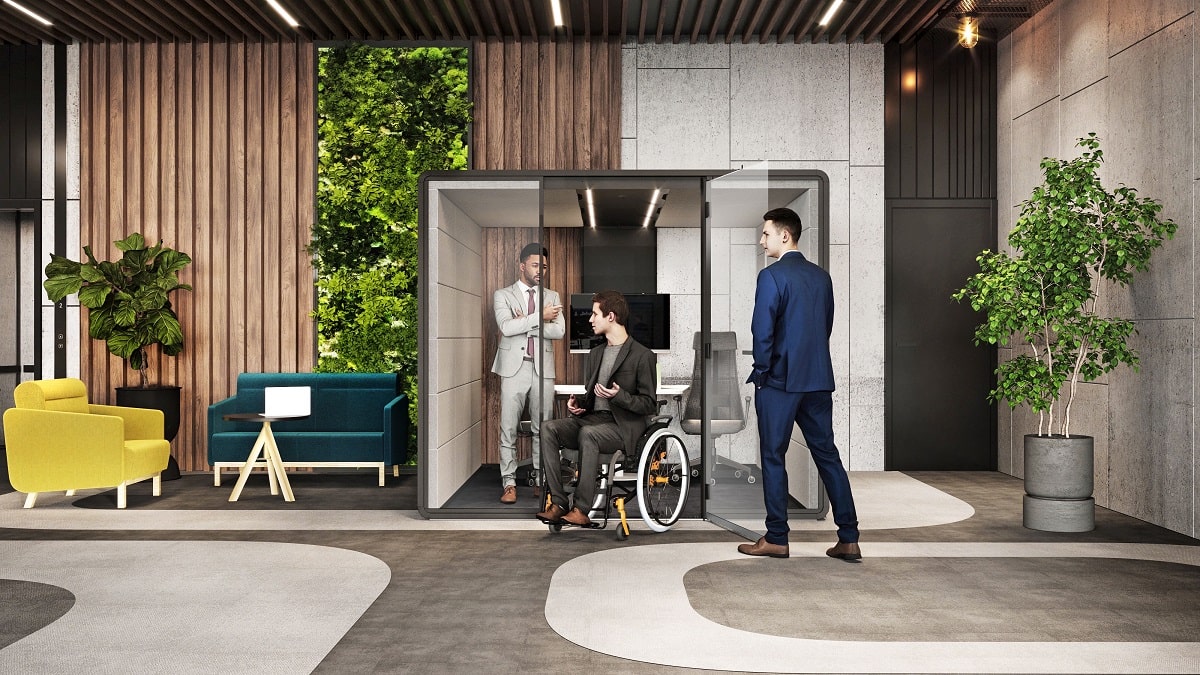
If you have a history of “going too hard,” resist the impulse to power through.
When that pushy voice spurs you to sally forth as you’re coming up against difficulties, take a break despite it. You’ll slowly override the patterns that have led you astray. Treat it like an exploratory rebellion. It’s exciting. Operating in a different way will lead you somewhere brand new.
Tweaking your workstyle demands a change of mind. And change of any depth takes time.
If you have rooted beliefs that slogging through is honorable, it will take time to accept rest as part of the process. But commitment to a way of work based on moderation will recalibrate you for the good. Bad habits do die hard, but when they fall away, a healthier, happier you is revealed.
Employee resilience – summary
Resilience is about how you recharge, not how you endure. As a matter of fact, overworking downright doesn’t work; countless studies have shown that its resulting stress leads to a garden variety of health problems, from impaired sleep to heart disease.
To turn the burnout ship around, take your hands off the helm periodically throughout the work day. The formula is simple: try hard, rest, then try hard again. Rest is the missing variable for most.
Take these five steps to build resilience in an easy-breezy way: do a self-assessment, set up your technology to help (rather than hurt), take regular breaks, start a work shutdown ritual, and prioritize sleep.
Fostering individual resilience in the workplace – frequently asked questions
What are the best kinds of breaks to take at work?
We have two guidelines for taking proper breaks. First, break doing something you like. People who do things they earnestly enjoy during their work breaks have fewer health symptoms, lower rates of burnout. and higher job satisfaction. A quick doodle or a gentle yoga flow will suffice; whatever you take to naturally. And second, make your breaks tech-free whenever possible. Note that research shows relaxing breaks (like bird watching) are especially effective at helping you detach from work, which in turn reduces strain and fatigue, boosting concentration.
How often should I take a break at work?
Every 30-90 minutes is ideal. But don’t fuss over perfection. Start with what works for you and anticipate fine-tuning your work-rest rhythm as you experiment. Steady progress towards a more moderate work style over time is success.
How do I talk to my supervisor about office pods?
Send them our blog for more insight into the necessity of pods. Some helpful reads include The top 5 questions about work pods for offices answered, 3 must-have features — acoustic office work pods, 9 reasons your sales team needs an office phone booth (or 2), and How “isolation” pods make the office more social, not less. If burnout is the big concern, share this quick read: 5 ways to prevent open office burnout.
